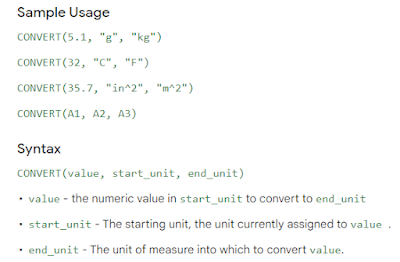Unit conversions are fundamental for engineers in a world where information and data comes from anywhere. Conversions are so usual that these are alredy automated in Google and there exist sites providing a very complete service of units conversion.
However, knowing how to perform a unit conversion is important since one may need to include this operation in a larger calculation (as in a sheet, for example).
For short, two unit systems are to be consider: British and SI, as categories to form composed units. Temperature should be regarded as a separate group since these need a different treatment when involved in composed units.
A bestiary of units
A very good and complete list of units and its conversion factors can be found in the Perry's Chemical Engineer's Handbook. Perhaps, its Section 1 is the completest source of this kind of information.
Note: When performing unit conversions thinking on the relastionship between the two units gives a feeling of your results. This helps to detect possible errors. Avoid to make this operations mechanically.
Although there are many units, categories help to find the conversion factor you are looking for. For example:
- mass,
- length,
- pressure,
- temperature,
- flow rate,
- force,
- power,
- energy,
Unit conversions
Notice, that the above process relies on well known conversion factors. It could be lengthy but it works.
A second way is by searching the corresponding unit conversion factor, which is actually available!
$1m=39.37inch$
or
$\dfrac{39.37 inch}{1m}$
Now the conversion in Eq. (1) can be performed in one single step as,
$2m=2m\times\dfrac{39.37inch}{1m}=78.74inch$
Somebody will say that the second option is faster but one will need to have at hand a good and complete set of unit conversion factors while the first option comes directly from knowing how the unit conversion operations work. There is no doubt that the first option is faster.
Consider a second situation. Yo need to convert $20.5 Btu/s$ into $Btu/hr$ The process is barely the same. The conversion is as follows,
$20.5\dfrac{Btu}{s}=20.5\dfrac{Btu}{s}\times\dfrac{60s}{1min}\times\dfrac{60min}{1hr}=73800\dfrac{Btu}{hr}$
From the above operation a fact comes out: $1hr=3600s$.
Temperature conversions
Two cases are common. The first case involves regular temperature unit conversions. The following formulae is used,
$x^\circ C=\dfrac{5}{9}\left( y^\circ F-32 \right)$ (if you want to convert $^\circ F$ into $^\circ C$)
and
$x^\circ C= y^\circ K - 273.15$ (if you want to convert $^\circ K$ into $^\circ C$)
for example. The above equations show a difference with all other conversion factors since temperature conversion involves addition or substraction (depending) instead of product/division (as before).
Note: When temperature is mixed with other units (like those for length or pressure, for example) conversion of temperature is not straight. For these situations very specific conversion factors are available for some thermodynamic parameters, for example.
The second case is presented in Perry's handbook as well. The question would be, if there is a temperature change measured in the Celsius or Kelvin degrees scale, how much does it change in the Fahrenheit degrees scale?
The question is easy to answer. Just multiply the amount by which the temperature changed in the $^\circ C$ or in the $^\circ K$ scale by 9/5. The result would be the new temperature in the $^\circ F$ scale.
For example, a change of $1^\circ C$ would be equivalent to a change of $1.8^\circ F$.
The case of mass and force pounds
Mass pound $lb_m$ and force pound $lb_f$ and regular pound $lb$ are commonly confused since some authors or the people do not use the m or f subscript to give a little more detail on the units they are talking about, specially when unknown parameters are used.
For example, if you are dealing with a parameter that you know has mass as dimension then it is logical to think that if someone writes $lb$ this unit refers to $lb_m$. This is, $lb=lb_m$, which makes sense.
On the other hand, if someone uses $lb$ for force units for a given parameter but you know nothing about this parameter you would think that this is a parameter related to mass. Next, unit conversions and further operations with other parameters will not work. Some people uses $lb$ and $lb_f$ as synonyms which causes confusion.
You should the consider the following set of conversion factors,
$lb=lb_m=0.4535kg$
$lb_f=4.448N$
In fact, $lb_f$ is decomposed in other units: $lb$ for mass, $ft$ for length and $s$ for time. This confirms the above statement $lb \neq lb_f$. Avoid mistakes and confusion by using the subscripts $m$ and $f$.
Units conversion in Google Sheets
Fortunately, Google Sheets has a built-in function to convert units from one system to another. This command and its syntax is as follows:
- for weight - u, grain, g, ozm, lbm, stone, sg, cwt, uk_cwt, ton, uk_ton
- for distance - ang, Picapt, pica, in, ft, yd, m, ell, mi, survey_mi Nmi, ly, parsec
- for time - sec, min, hr, day, yr
- for pressure - Pa, mmHg, Torr, psi, atm
- for force - dyn, pond, N, lbf
- for energy - eV, e, J, flb, c, cal, BTU, Wh, HPh
- for power - W, PS, HP
- for temperature - C, F, K, Rank, Reau
- for volume - ang^3, Picapt^3, tsp, tspm, tbs, in^3, oz, cup, pt, uk_pt, qt, l, uk_qt, gal, uk_gal, ft^3, bushel, barrel, yd^3, m^3, MTON, GRT, mi^3, Nmi^3, ly^3
- for area - ang^2, Picapt^2, in^2, ft^2, yd^2, m^2,ar, Morgen,uk_acre, us_acre, ha, mi^2, Nmi^2, ly^2
- for velocity - m/hr, mph, kn, admkn, m/s
This section was partially adapted from the Google Support website.
Any questtion? Write in the comments and I shall try to help.
=========
Ildebrando.





No comments:
Post a Comment